Kinderpunsch (German Christmas Punch)
This post may contain affiliate links. See my disclosure policy.
The flavorful and heavenly smelling mulled Christmas punch (non-alcoholic) you know and love from the German Christmas markets! Kinderpunsch incorporates fruit tea, fruit juices, citrus, and a variety of spices for an unforgettable fragrance and flavor!
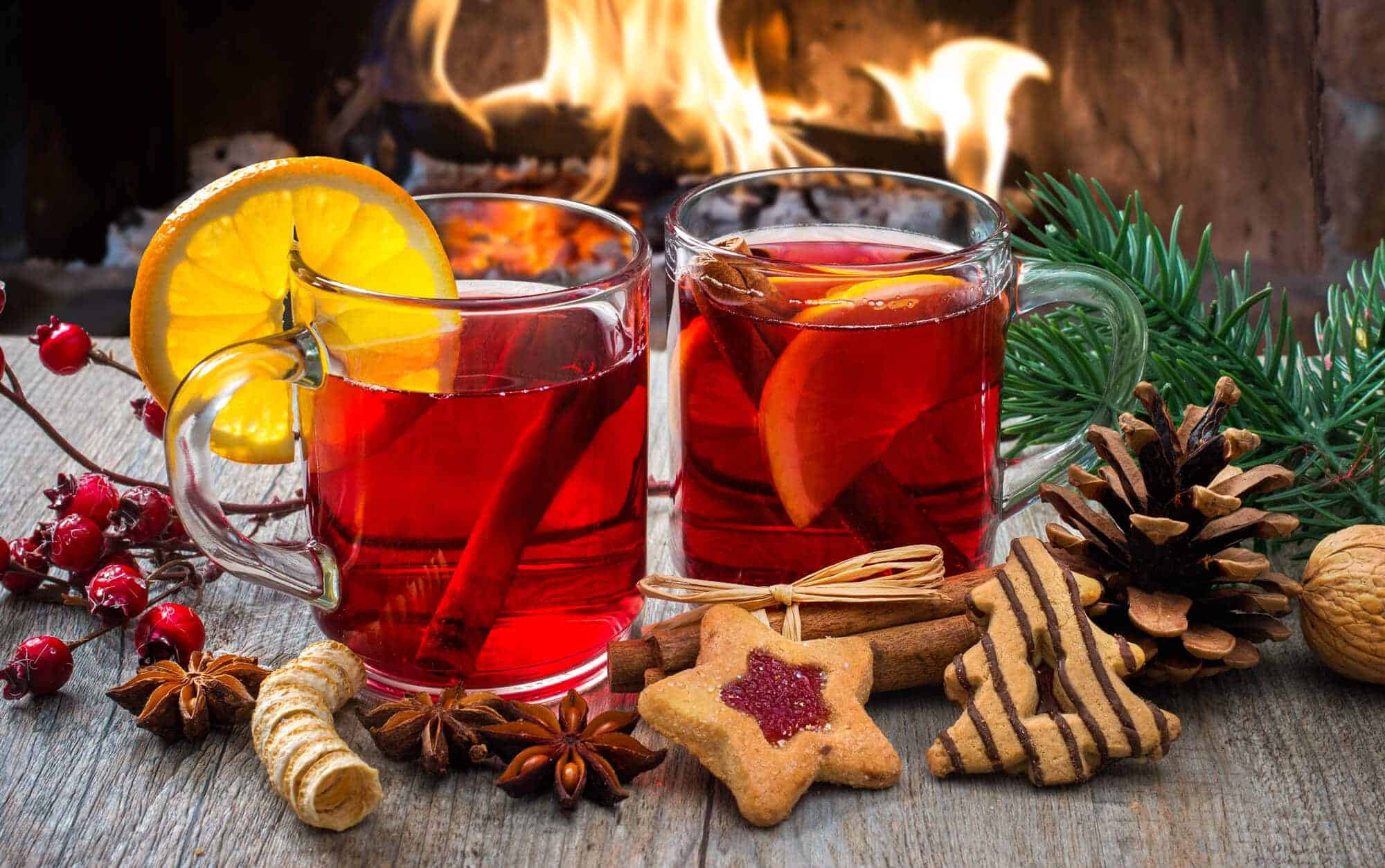
There is something magical about German Christmas markets: The colors, the lights, the sounds, the displays, the huge selection of hand-crafted goods, delicious foods, and irresistible smells. Time seems to stand still in this setting and you can easily lose yourself for hours.
And that’s where two traditional German Christmas hot drinks come in handy to keep your warm as you meander your way through the stalls, inhaling the enchanting atmosphere.

The first of these is Glühwein, a mulled wine with classic warming spices. The other, Kinderpunsch, is just what its name translates to: A punch for kids or for adults who don’t drink. It’s like the virgin version of Glühwein.
I remember visiting the Stuttgarter Weihnachtsmarkt (where I grew up) every year next to the Altes Schloss (old palace). Clutching a mug of steaming hot Kinderpunsch between my hands, I would sip it slowly as we made our way through the market.
The thing that distinguishes this German punch from other mulled punches is the addition of Früchtetee (fruit tea), most commonly Malvetee (hibiscus tee), one of the most popular herbal teas in Germany. It infuses the punch with a red color and contributes a wonderful tangy flavor.
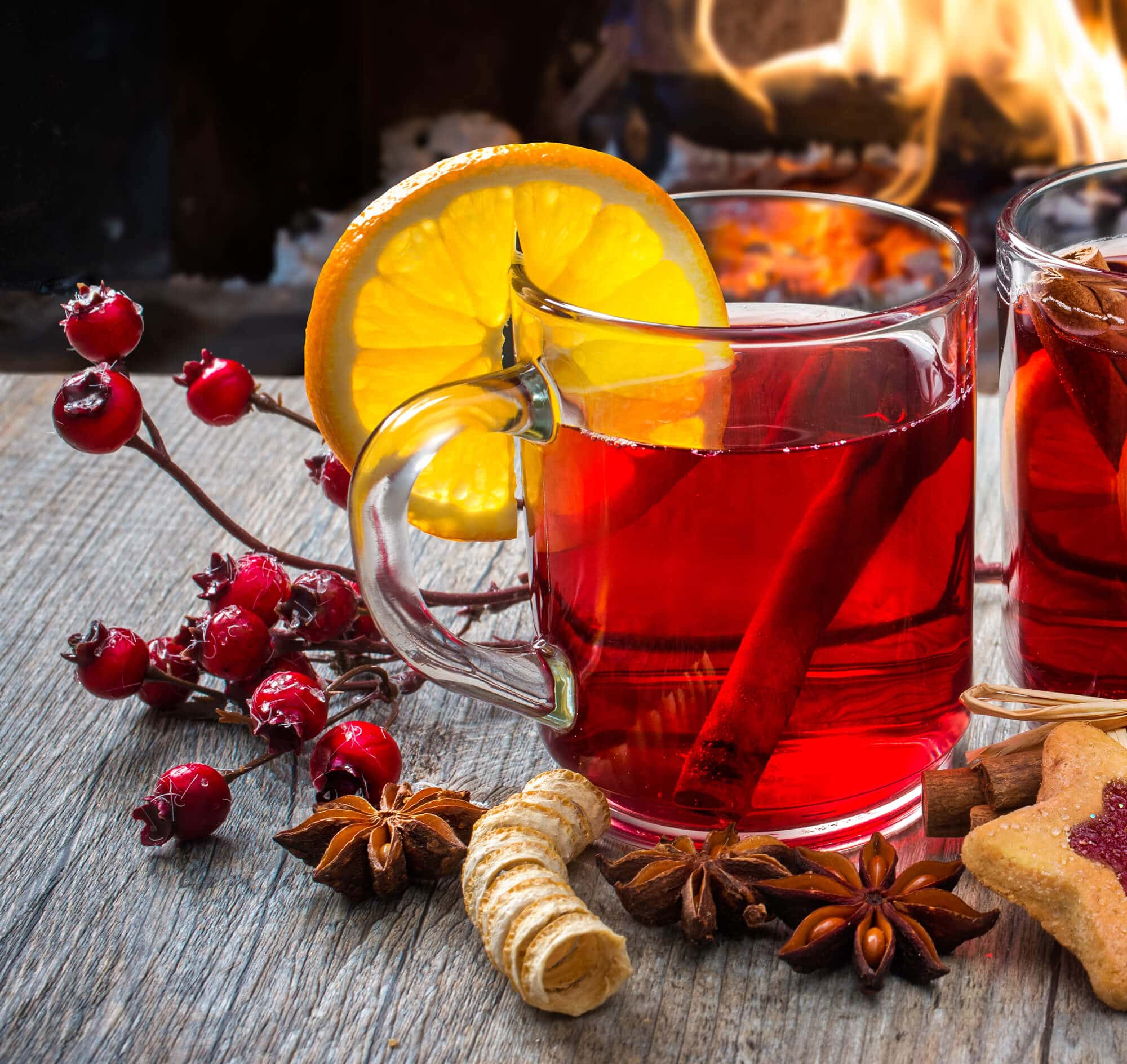
My most treasured Christmas market memories are of Rothenburg ob der Tauber, a small medieval walled city about an hour and a half northeast of Stuttgart (less if you drive like a German), and home to the world famous Käthe Wohlfahrt store and a special deep-fried pastry, Schneebälle.
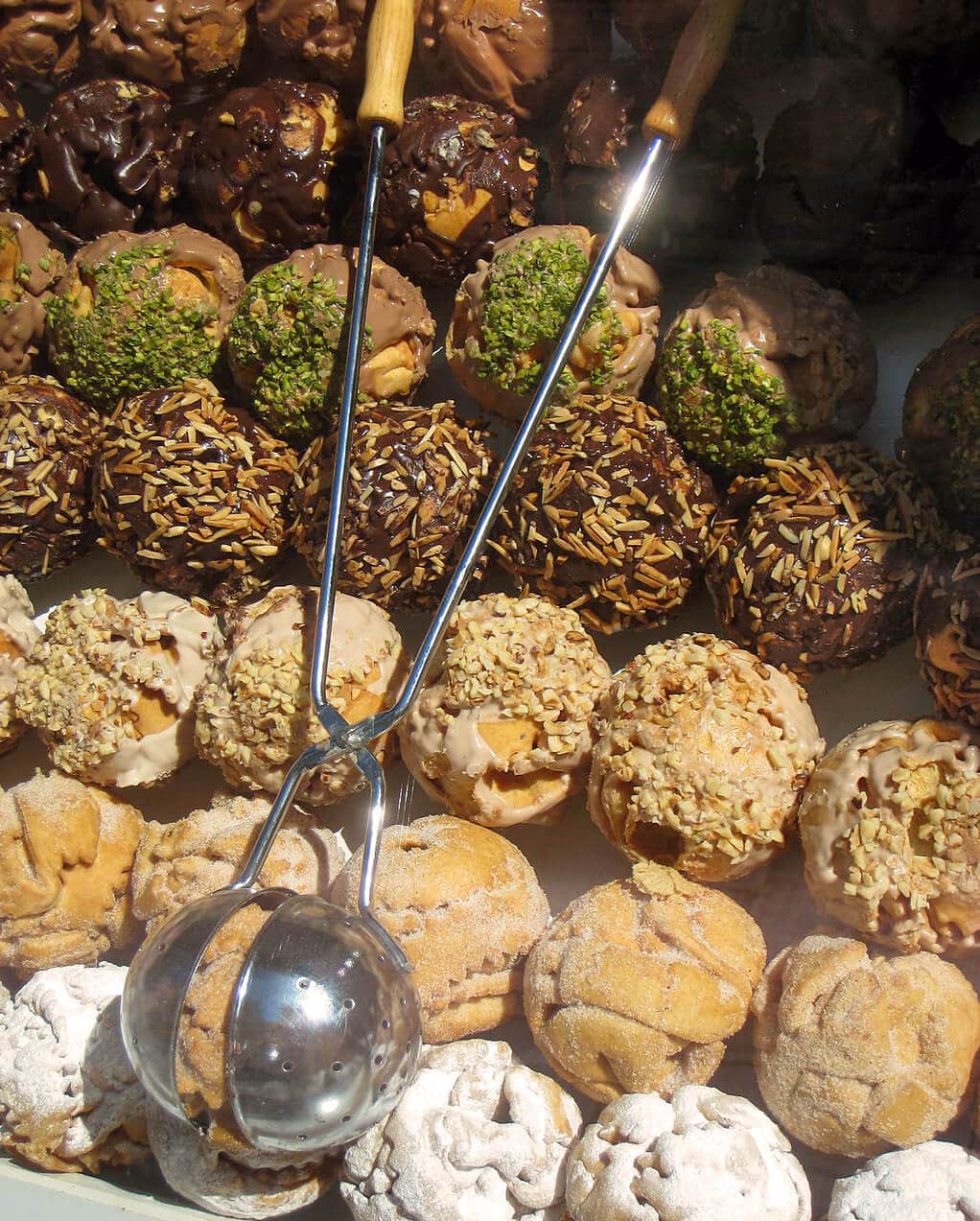
While it’s not one of the more famous Christmas markets because of its small size, it’s nevertheless my personal favorite because of the quiet and reverent atmosphere and the sheer beauty of the old setting.
I remember those Winter family drives out to Rothenburg with my parents and brother, listening to three of our family’s favorite Christmas albums, The Carpenters, John Denver, and The Jackson 5, and enjoying more of that Kinderpunsch while strolling through the town with the lights twinkling along each cobblestoned street.
And as funny as it might sound, every time I hear little Michael singing “Someday at Christmas” and “Give Love On Christmas Day” I’m filled with those cherished memories of that special German town in Bavaria.

Kinderpunsch Recipe
Let’s get started!
To make the Kinderpunsch, simply place all the ingredients except for the honey and tea in a stock pot and bring to a boil. Reduce the heat, cover and simmer for 15 minutes. Add the tea bags and let them steep, covered, for 10 minutes. Remove the tea bags and add honey to taste. Reheat the punch until hot.
Serve hot. Optional garnishes to put in each mug include some orange slices, cloves, star anise or cinnamon stick.

Enjoy!
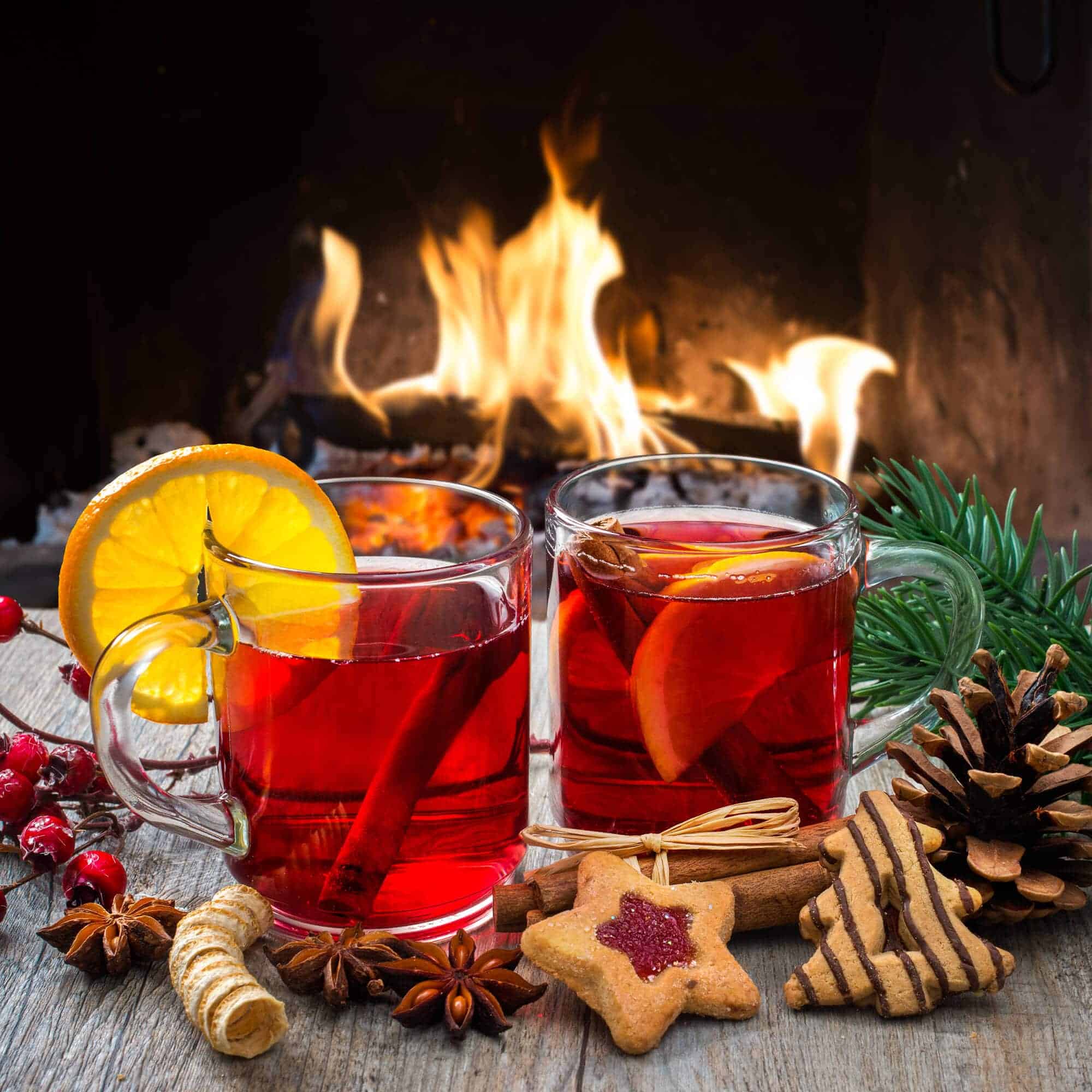
For more traditional German Christmas goodies be sure to try our:
- Stollen
- Pfeffernüsse
- Lebkuchen
- Springerle
- Gugelhupf
- Printen
- Magenbrot
- Speculoos
- Vanillekipferl
- Zimtsterne
- Marzipan
- Marzipankartoffeln
- Bethmännchen
- Heidesand
Save This Recipe
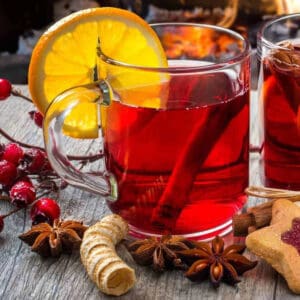
Kinderpunsch (German Christmas Punch)
Ingredients
- 2 cups apple juice
- 2 cups orange juice (or substitute half apple juice and half cherry juice) NOTE: some recipes use orange juice and some don't. If you omit the orange juice the Kinderpunsch will be translucent in color.
- 1/2 cup cherry juice (can substitute more orange or apple juice)
- 2 cups water
- 2 cinnamon sticks
- 10 whole cloves
- 2 whole star anise
- 5 bags hibiscus tea , or buy in bulk and use 5 teaspoons loose dried hibiscus petals
- Honey to taste
Instructions
- To make the Kinderpunsch, simply place all the ingredients except for the honey and tea in a stock pot and bring to a boil. Reduce the heat, cover and simmer for 15 minutes. Add the tea bags and let them steep, covered, for 10 minutes. Remove the tea bags and add honey to taste. Reheat the punch until hot.
- Serve hot. Optional garnishes to place in each mug include orange slices, cloves, a star anise or cinnamon stick.
Notes
Nutrition



















This is just as I remember it. Delicious and warming to the body and soul. Thank you for sharing this recipe, it brings back a lot of fond memories.
Thank you, Edha, I’m so happy you enjoyed it <3
I made a test cup to see how it would turn out and I was mindblown! In winter, I used to go ice skating with my parents and we would always get mulled wine and kinderpunsch (obviously the adults got the wine and I got the kinderpunsch xD). And this kinderpunsch smelled and tasted the exact same as the one we got at the ice rink. This brought back some fond memories of my first experience with ice skating and a warm cuppa to heat up the frozen fingers! Thank you so much for putting this on the web!
I’m so glad you enjoyed this, Jennifer, and that it brought back those warm memories, thank you!
Thank you so much for posting this! One of my favorite memories of living in Germany was visiting as many Christmas markets as we could through the holiday season. They were absolutely magical and each was unique. I don’t drink much alcohol so I usually ordered the kinderpunsch. I’ve had several variations, but this was phenomenal! One market we went to was serving hot lemonade with honey in it as kinderpunsch, so I’m assuming it may be whatever that area wants to serve? Anyway, this recipe is fabulous, is now my official holiday drink, and goes perfectly with my collection of market mugs. :)
Wonderful! I’m so glad you enjoyed this, Erica, and really appreciate the feedback – thank you!
Kimberly, could you share what kind of cherry juice you used? Not sure if I should go with the tart cherry juice or the regular sweet version.
Hi Allie, I’ve used both but prefer the regular sweet version.
Star anise is Asian. This can’t be truly a classic German drink with non-native products.
I really hope your comment is a joke. None of these spices are native to Europe but have all been used in Germany for centuries. What about potatoes which are staples in traditional German cooking? No, they’re native to Peru. And how about tomatoes, corn, peppers, etc? Nope, they’re all native to the Americas.
Don’t tell the Hungarians that their traditional dishes are all a farce because they center around paprika which isn’t native to their country! And whatever you do don’t tell the Italians that all their traditional tomato-based sauces couldn’t possibly be classic Italian dishes because tomatoes aren’t native to Italy!
Truly a bonehead remark!
Quote “The pre-Christmas market on the main market in Nürnberg can be traced back to the end of the 16th century / beginning of the 17th century. Since Nürnberg (Bavarian pleasure place) was the intersection of two important trade routes, Nürnberg had been an important trading center for spices from the Orient, India, Ceylon and Madagascar since the late Middle Ages. In addition to salt and saffron, popular spices were mainly pepper, ginger, cloves, cinnamon, nutmeg and cardamom (Stadtlexikon Nürnberg). This is probably the origin for the seasoning of wine, gingerbread and sausages.https://www.spezialitaetenland-bayern.de/spezialitaeten/nuernberger-gluehwein/ ”
How about that:
“Drinks were also spiced: beer was mixed with nutmeg and ginger (still today in England: ginger ale, ginger beer or ginger wine). The wines of the Middle Ages were more condensed than fine grape juices. They were cooked with various spices. Today’s mulled wines are still a faint reflection of it.” https://www.pepersack.de/warenkunde/gew%C3%BCrze/
I am from Germany. We’ve been using oriental spices since the Crusades. ;-)
We just returned from a holiday trip to Germany. Rothenburg and it’s Christmas Market was our first stop. Magical! My son loved the Kinderpunsch, and asked for it often during our travels. He will be so excited to make this at home. Thanks for sharing your recipe!
The Better Half and I will be enjoying the gluhwein recipe, too…
Hello!
Your recipe sounds great!
And I’ve just read that Kinderpunsch is the kid-friendly version of Glühwein, and I think I would like to make both.
Do you have any recommended recipes for the glühwein, or a recipe modification of the kinderpunsch?
Thanks!
Hi Garrett, sure thing. You can make a traditional Glühwein by pouring a bottle of red wine (750 mL) in a pot (some dilute it a little by adding an additoinal 3/4 cup water, your choice) along with 2 cinnamon sticks, 6 whole cloves, 2 star anise (optional) and one large orange (cut into slices). Some also include a lemon (cut into slices). So put everything in a pot and heat it just until below simmering and let it stay on low heat (don’t let it boil at any point) for an hour. Stir in some sugar or honey according to desired sweetness (generally between 1/3 to 1/2 cup sugar). Strain and serve.
Kimberly, this sounds great!
Thank you for the tip on not boiling the beverage to keep from cooking the alcohol out or overcooking the wine. Is there any preference regarding type of wine: merlot, cab, local favorites, etc.?
And to all others, the Kinderpunsch recipe is delicious!
We made this recipe as soon as we found it, and stuck to using all the optional ingredients (cherry juice & loose hibiscus petals). The drink came out to a wonderful, warm, rich colored shade of red and the amount of spice was perfect!
Thank you again, Kimberly!
Awesome, thank you, Garrett! The type of wine is purely personal choice (Pinot Noir, Merlot, Shiraz, Beaujolais, etc). What is generally recommended when making Glühwein or mulled wine is to go with something inexpensive or “middle of the road.” The quality of the wine isn’t terribly important because the flavors of the spices and citrus are going to overshadow any delicate, subtle flavors of the wine anyway. Another note about heating the wine – some wines withstand heat better than others. Alcohol starts to vaporize at 173 F so be sure to keep the temp below that. Another option (requires less oversight), if you’re adding some water, is to simmer the spices in the water for a while first to release the flavors then add the wine and warm just until heated.
humph, no one actually critique the recipe… just memories or photos. come on
Not sure how this can be made with 2 cups orange juice yet the result in the pictures is completely clear?
I assume while the juices are simmering, the cloudiness of the orange juice will clear up.
I was at the Stuttgarter Weihnachtsmarkt in 2012 and loved the atmosphere, market and the food. I went every night to the market for the two weeks that I was there. My favorite thing to do was walk around and look at the booths while drinking a cup of Kinderpunsch. It would keep me warm the entire time I was out walking around (and it was very cold while I was there)
I have looked of a recipe that would mimic that of what they serve at the market, but for 5 years I have not been able to duplicate it. Before I attempt it, do you know if this recipe is similar to what is used in Stuttgart?
Hi David, it’s been several years since I’ve had Kinderpunsch at the Weihnachtsmarkt so I’m unable to do a direct side-by-side comparison, but yes, this is very similar, it tastes like how I remember it, and it’s made with the traditional ingredients commonly used to make Kinderpunsch.
heheheeee… I currently live in Stuttgart and I am using your recipe to make our own Kinderpunsch! Thanks for the delicious afternoon (and a fun trip to Kaufland searching for Hibiskus tee :-) )…
Yay, Kelly! The Christmas market opens on the 29th, I wish so much I were there!
I used to live in Germany! This tastes like the stuff me and my mother would have together at the markets! Thanks for bringing back the memories!
This punch sounds fabulous….and I love all the pics!
I hope to one day visit Germany during the holiday season. That spiced punch looks absolutely delicious!
I’ve always wanted to go to a German Christmas Market! Love the punch and the photos!!!